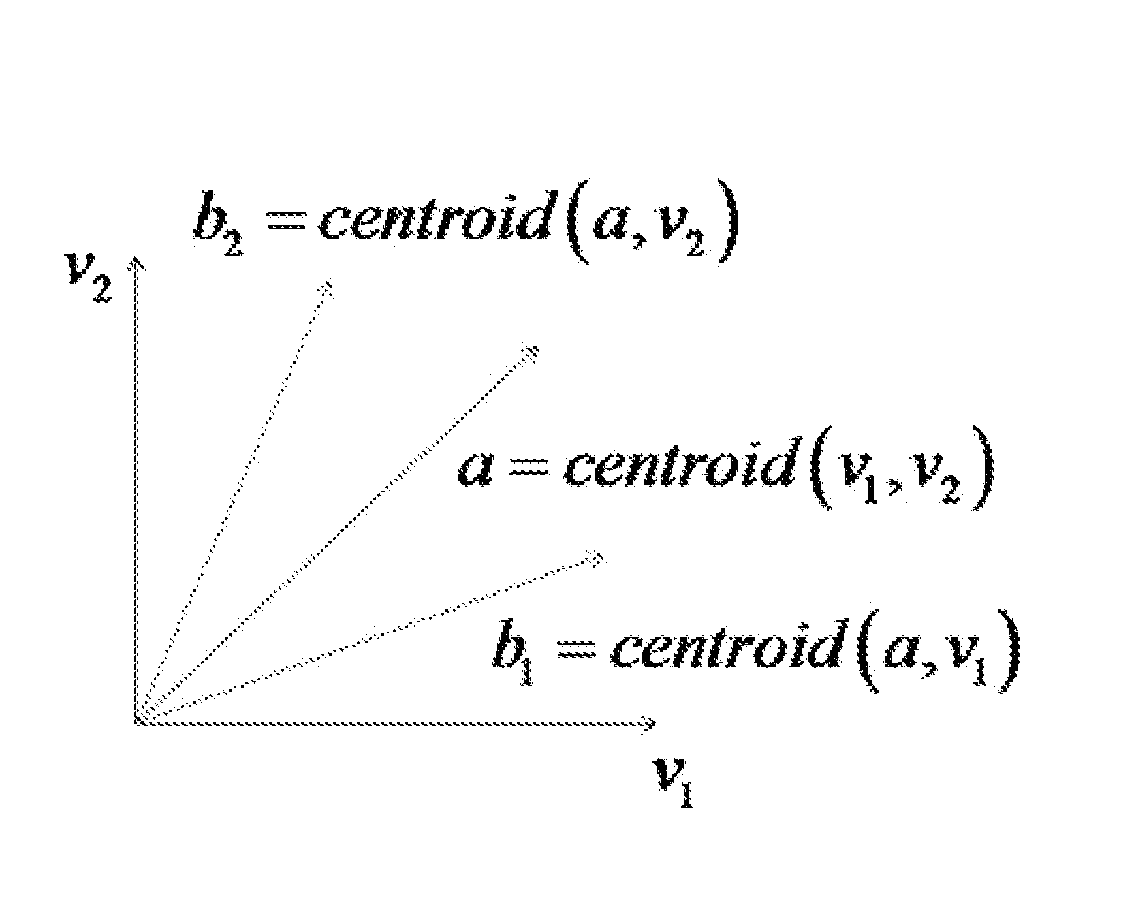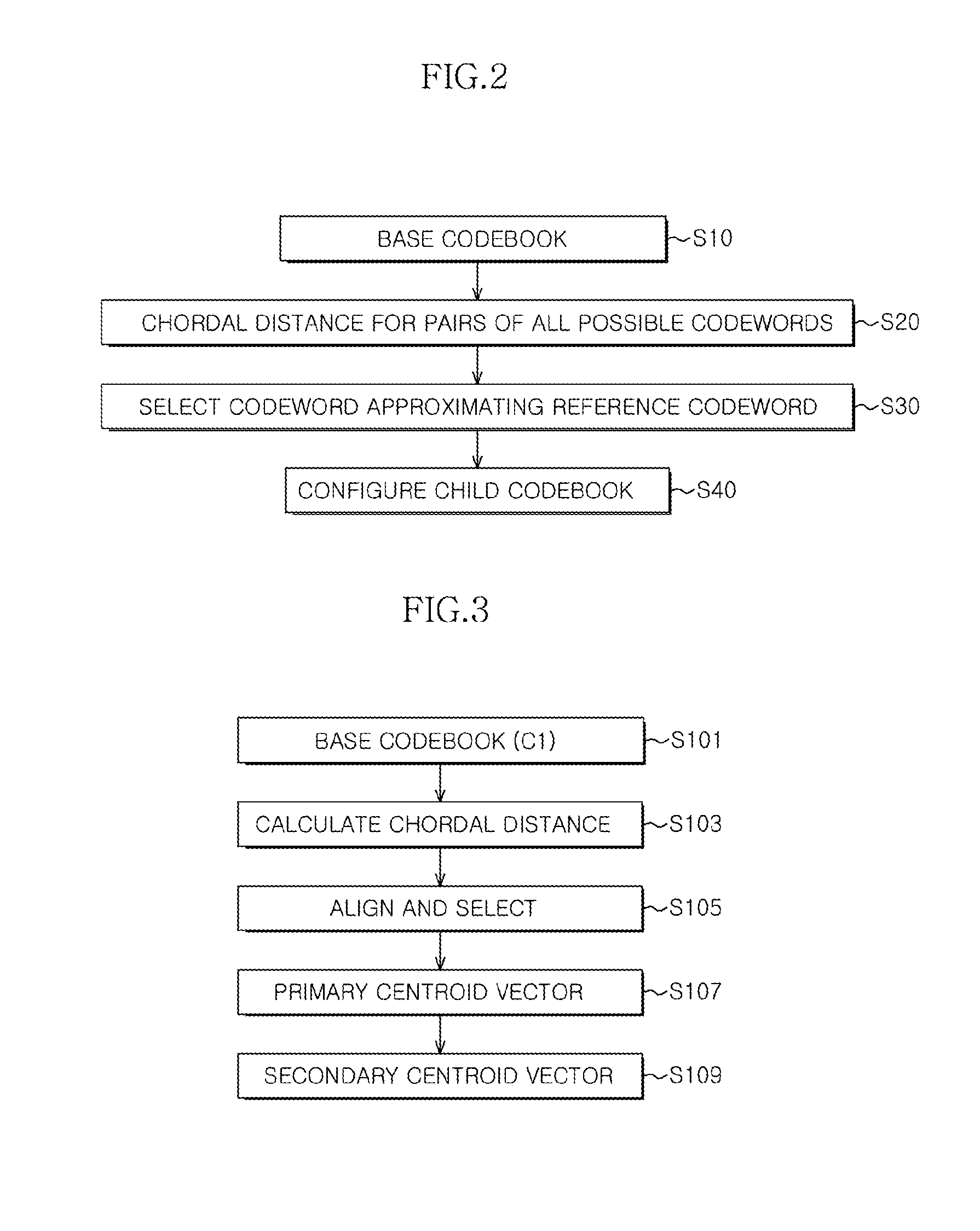MIMO system and method of generating hierarchical codebook therefor
a multi-input multiple output and codebook technology, applied in the field of multi-input multiple output (mimo) system and the method of generating hierarchical codebooks therefor, can solve the problems of increasing calculation complexity, degrading efficiency, and reducing the performance of spatially correlated channels
- Summary
- Abstract
- Description
- Claims
- Application Information
AI Technical Summary
Benefits of technology
Problems solved by technology
Method used
Image
Examples
first embodiment
[0072]FIG. 3 is a flow chart for describing the method of generating a hierarchical codebook in accordance with the present invention and illustrates an example of the method of generating a hierarchical codebook for the i.i.d. channel.
[0073]First, for convenience of explanation, a simple system model having a single transmitting end and a single receiving end is considered. When it is assumed that the receiving end may completely estimate its own channel for a block fading channel, a system model is as follows.
y=√{square root over (P)}HHVs+n [Equation 9]
[0074]Where P represents transmission power, H represents an M×N channel matrix in which a channel entry is i.i.d. complex Gaussian having zero average and unit dispersion, V represents an M×N precoding matrix, s represents a transmission symbol, and n represents an N×1 complex white Gaussian noise vector having the zero average and unit dispersion.
[0075]The centroid condition minimizes the mean distortion (distance) represented by...
second embodiment
[0092]FIG. 5 is a flow chart for describing the method of generating a hierarchical codebook in accordance with the present invention and illustrates another example of the method of generating a hierarchical codebook for the i.i.d. channel.
[0093]The method of generating a codebook in accordance with the second embodiment of the present invention may be represented by a codebook mapping scheme. Compared with one generating the child codebook from the base codebook in which the hierarchical codebook in accordance with the first embodiment of the present invention is the Grassmannian codebook, the child codebook is is configured based on the two codebooks that are present in advance.
[0094]Referring to FIG. 5, the first base codebook C1={v1, v2, . . . , v2B1} and the second base codebook C2={c1, c2, . . . , c2B2} are first prepared (S201). In this case, B12.
[0095]When the two base codebooks are prepared, the chordal distance between Vi(1≦i≦2B1) and cj(1≦j≦2B2) is calculated for all the...
third embodiment
[0105]FIG. 7 is a flow chart for describing the method of generating a hierarchical codebook in accordance with the present invention and illustrates an example of the method of generating a hierarchical codebook for the temporally correlated channel.
[0106]The channel state of the two consecutive time slots may be correlated by a correlation coefficient ρ in the temporally correlated channel. In the channel, the number of feedback bits may be reduced by using the channel correlation. A temporally correlated channel model is represented as follows.
H(t)=ρH(t−1)+√{square root over (1−ρ2)}G(t) [Equation 10]
[0107]Where G(t) is the M×N matrix and each element thereof has normal distribution having the zero mean and unit distribution. ρρ is determined by an auto-correlation function of a Jake model as represented by Equation 11.
R(l)=J0(2πfDsl) [Equation 11]
[0108]Where J0(•) is a first kind of a 0 order bezel function of type 1, fD is a Doppler shift, and Ts is a sampling time. When 1=1, ...
PUM
 Login to View More
Login to View More Abstract
Description
Claims
Application Information
 Login to View More
Login to View More - R&D
- Intellectual Property
- Life Sciences
- Materials
- Tech Scout
- Unparalleled Data Quality
- Higher Quality Content
- 60% Fewer Hallucinations
Browse by: Latest US Patents, China's latest patents, Technical Efficacy Thesaurus, Application Domain, Technology Topic, Popular Technical Reports.
© 2025 PatSnap. All rights reserved.Legal|Privacy policy|Modern Slavery Act Transparency Statement|Sitemap|About US| Contact US: help@patsnap.com



